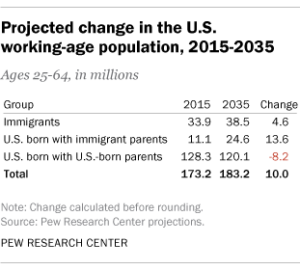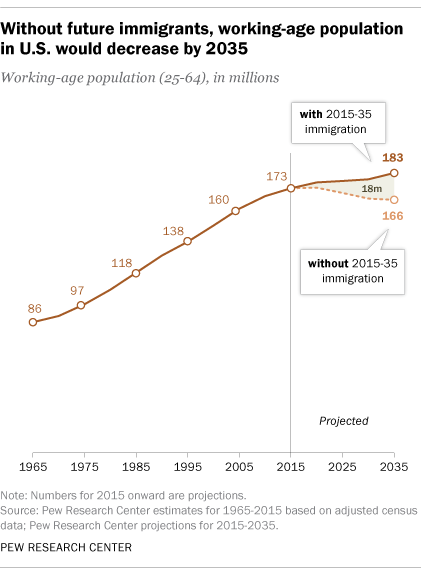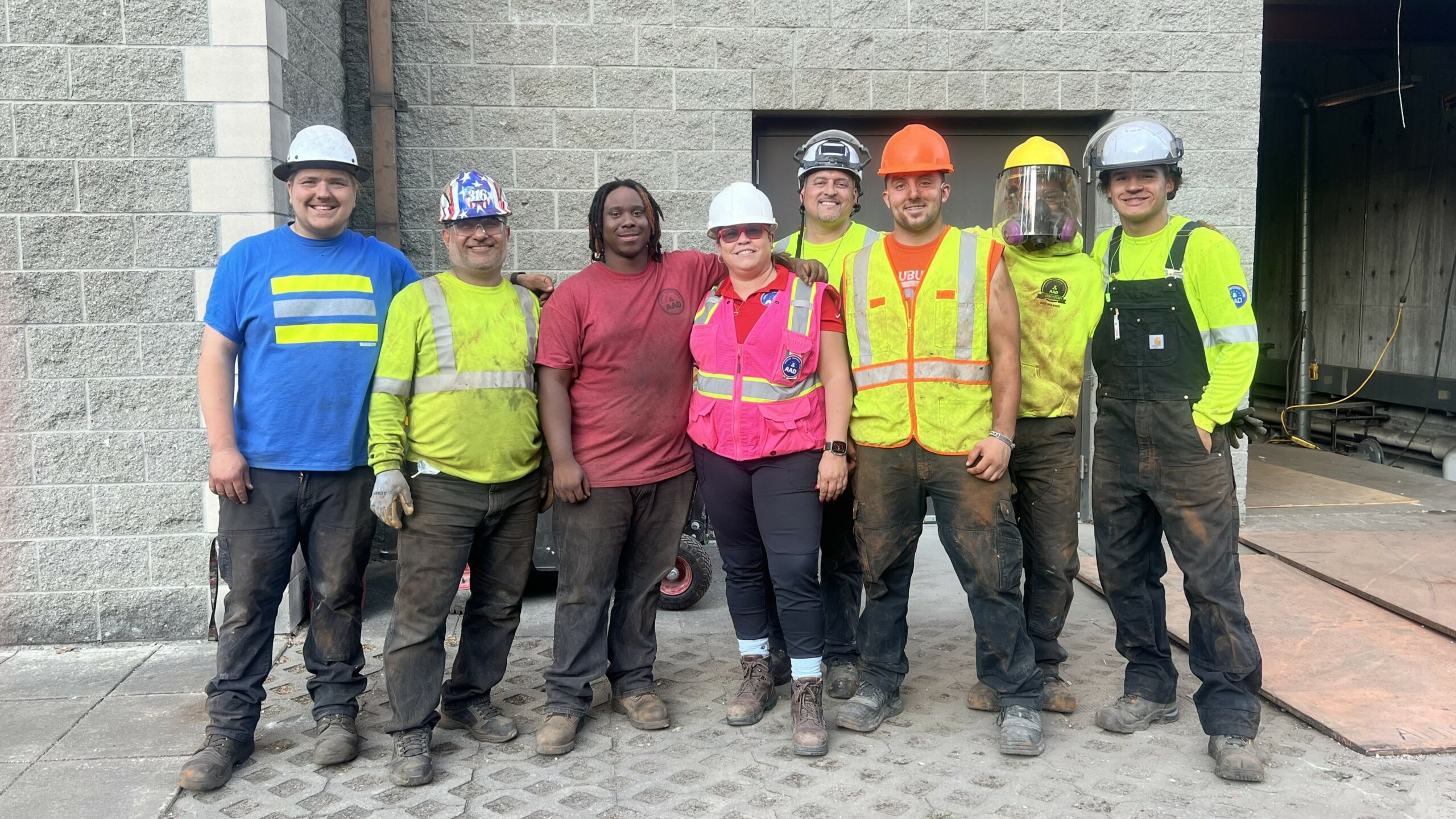Over the next two decades, as Baby Boomers age out of the workforce, the working-age population will begin to look slightly different.
According to the latest PEW Research released Thursday, the number of working-age adults — those born in the U.S. whose parents also were born in the U.S. — is projected to decline by 8%, or 8.2 million workers, from 2015 to 2035. Contributing to this, in addition to the loss of Baby Boomers, is the decline in birth rates in the U.S. since the 1970s.
PEW also says the projected growth rate for the total working-age adult population will be 0.3% per year through 2035 — well under increases in recent decades. “The annual growth peaked at 2% in the decade from 1975 to 1985, when the Baby Boomers were coming of age, and growth rates were at least 0.8% in all other decades since 1965,” the report says.
Currently, there are 5.6 million jobs that are available in the U.S. — double what it was in 2009 — that companies are having a hard time filling because of the employability gap due to inadequate education and skills training. Moreover, as the economy continues to grow, there will be even more open jobs in the coming future.
So if there aren’t going to be enough workers entering into the working-age population, how will we be able to fill the gaps?
Well, as the PEW projects, immigrants will help. By 2035, PEW estimates that the number of working-age adults with immigrant parents is expected to increase 7% and working-age immigrants will inch up 1%.

Without them, PEW found, the working age population in the U.S. would decrease by 2035.

By the Numbers
- The number of adults in the prime working ages of 25 to 64 — 173.2 million in 2015 — will rise to 183.2 million in 2035. That total growth of 10 million over two decades will be lower than the total in any single decade since the 1960s.
- From 2015 to 2035, working-age adults — those born in the U.S. whose parents also were born in the U.S. — is projected to drop by 8.2 million to 120.1 million in 2035.
- Working-age U.S.-born adults with immigrant parents will increase by 13.5 million.
- The number of working-age immigrants is projected to increase from 33.9 million in 2015 to 38.5 million by 2035, with new immigrant arrivals accounting for all of that gain.











